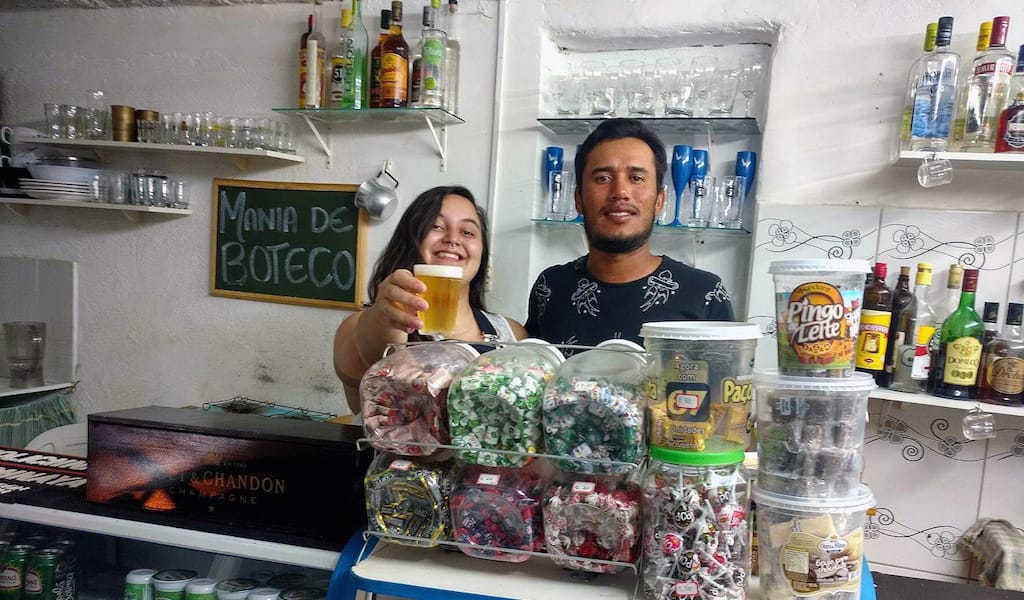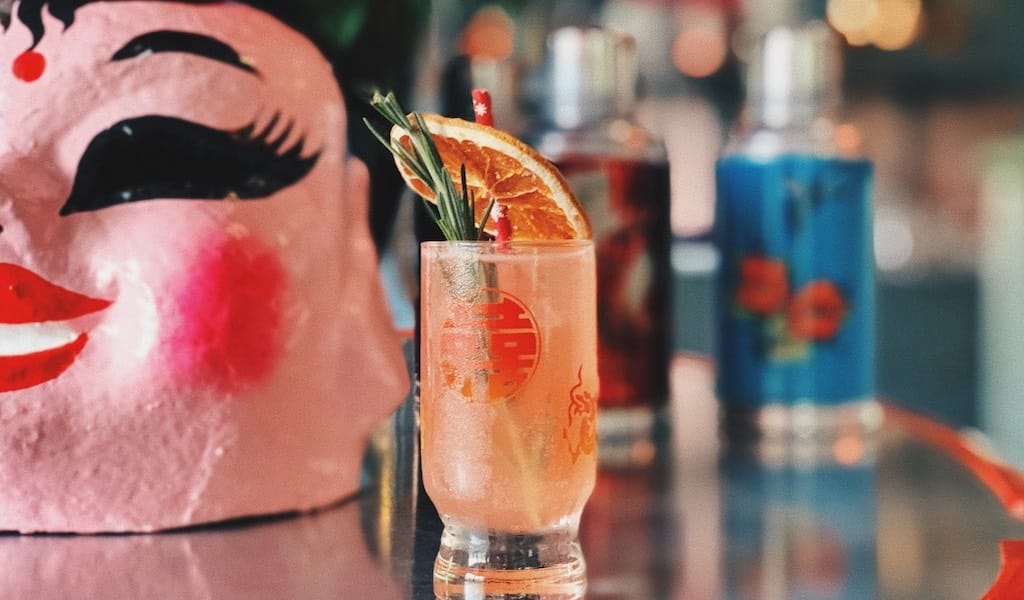If it weren’t for the dozens of brightly lit signs and paper lanterns promising libations of every sort, you might mistake the two narrow alleys alongside the train tracks on the northeast side of Shibuya station for a derelict apartment block.
In reality Nonbei Yokocho (AKA Drunkard’s Alley) is one of Tokyo’s few remaining yokocho (side street) bar districts. Like the much larger and better-known Golden Gai in Shinjuku, Nonbei Yokocho is a collection of aging and tightly packed microbars.
Each watering hole is scarcely more than a few square meters, and if longtime regulars aren’t taking up the scant floor space, newcomers may try any number of doors before they find an empty seat. Among the several dozen cubbyhole bars in Nonbei Yokocho, there have only been about five vacancies in the last decade, and most of these changed hands through word of mouth or backdoor deals. Some of these cloistered rooms span generations. There is an undeniable in-crowd vibe here, and the generally gritty, windowless exteriors can intimidate the uninitiated.
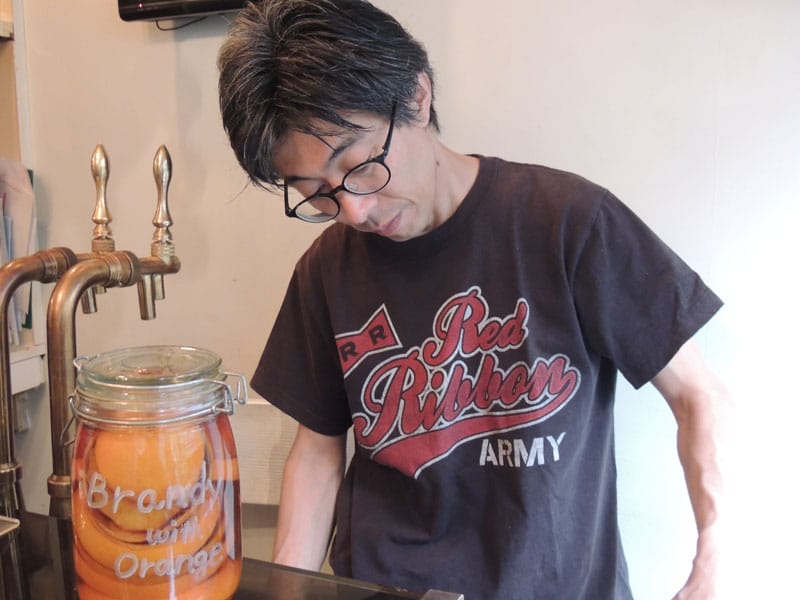
Tight Bar, much to the contrary, is a lighthouse on the upper floor of the district’s northwest corner. A glance at its fishbowl window is enough to beckon the Nonbei Yokocho greenhorn up a steep and narrow set of stairs to partake and watch life unfold below. Owner Yosuke Kimura can be found tending bar most nights, his easygoing demeanor and t-shirts a stark contrast to the stereotypical Tokyo barman’s shirtsleeves and bow tie. But it’s a calculated casualness. The lean former salaryman walked away from a company job 12 years ago when he saw the “For Rent” sign hanging in the window and never looked back.
“Shibuya has few places where you can just drop by and have a drink,” he said. “You have to order food, or if it’s a bar, you usually have a table charge. Because there are few bars that allow customers to drink just one glass, I wanted to make a bar that gives such service. Customers can drink casually, and if they can talk to each other, it also makes this place interesting.” On our last visit, a steady rotation of expats who knew Kimura-san by name and a few curious tourists came through for a pre-dinner tipple.
“When I just opened my bar, most of the customers were my friends. Then regular customers from Nonbei Yokocho came in. Afterwards, more and more foreign tourists or foreigners started to come here and drink,” Kimura explained. This trend isn’t unique to Tight Bar. “Yes, the customers in Nonbei Yokocho have changed,” Kimura mused as he hand-chipped ice for a gin and tonic. “More young people come here now. In the past, there were mostly 40- to 50-year-old salarymen, but recently even university students have been coming here. The image of the old man’s Yokocho has shifted to a lighter image.”
Kimura-san is constantly tinkering with new cocktail recipes to keep pace with the changing customer base, and recently he’s been experimenting with different liquor infusions. On our most recent visit we sampled a gin and tonic with rosemary and black pepper, as well as an orange-infused brandy cocktail. These simple but eyebrow-raising flavor combinations are a rarity in Tokyo’s rather deficient cocktail scene. The bespectacled barkeep wants what any good craftsman does: to serve a truly unique product, though he’s happy to pour you a frothy-headed Asahi as well.
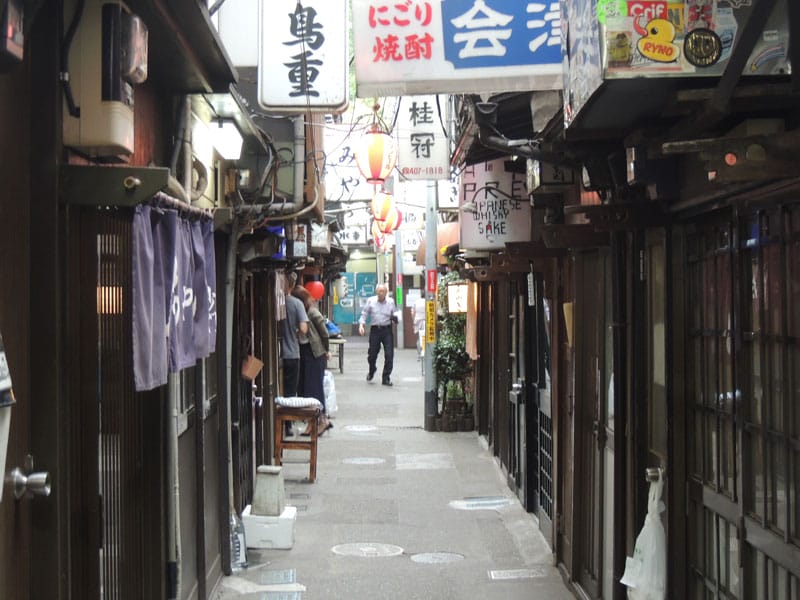
Despite its small size – just five stools – a lot of people can squeeze into Tight Bar. “Last night we had 15 or 16 people in here. But after 10 p.m. it’s hard to make room.” As the tiny bar began to fill up, we asked Kimura-san if he’s at all worried about the fate of Nonbei Yokocho. As Tokyo readies itself for the 2020 Olympics, rumors abound of old districts such as these getting torn down.
Kimura-san naturally has concerns, but he seems to have made peace with them. “This is a 65-year-old building. We cannot do any reinforcement work. We are allowed to use this building as it is by national law. But because this place was built 65 years ago, before the current code was implemented, it’s in the gray zone.”
He pauses to clear the bar of a few empty glasses before continuing. “I hope this place becomes a tourist destination. If this place becomes more popular, maybe the government will change their attitude.” We can raise a glass to that.
Editor’s note: This piece was originally published on June 22, 2016, as part of CB’s Bar Week.
 January 19, 2018 Mania de Boteco
January 19, 2018 Mania de Boteco
It's not easy to get to Mania de Boteco. You have to go up, up, up, first by car (or, […] Posted in Rio September 20, 2021 Night Pickers
September 20, 2021 Night Pickers
Although it’s the oldest wine region in Portugal, Dão in central Portugal does not have […] Posted in Lisbon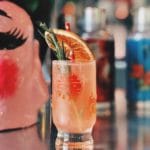 November 20, 2020 Local Spirit
November 20, 2020 Local Spirit
The loss of the world’s first baijiu-themed bar, Beijing’s Capital Spirits, to hutong […] Posted in Shanghai
Published on September 06, 2021
Related stories
January 19, 2018
RioIt's not easy to get to Mania de Boteco. You have to go up, up, up, first by car (or, for something more thrilling, on the back of a motorcycle taxi) and then by foot, cutting across alleys and climbing narrow stairwells. But this spot is worth all the effort. Tiny and humble, Mania de…
September 20, 2021
LisbonAlthough it’s the oldest wine region in Portugal, Dão in central Portugal does not have the high profile of its neighbor to the north, the Douro Valley. And yet, Dão is the birthplace of the touriga nacional, one of the finest grapes in Portugal, a country with more than 300 different grape varieties. Considering this…
November 20, 2020
ShanghaiThe loss of the world’s first baijiu-themed bar, Beijing’s Capital Spirits, to hutong landlord issues last year refocused the spirit’s lens on Shanghai, where bars are incorporating the grain alcohol into their drinks program. Baijiu may be the most-consumed spirit in the world – thanks mostly to China’s massive population. But its name has only…













































